The Virtual Experiential Museum in Varanasi, Uttar Pradesh, is an immersive journey into India’s cultural and historical heritage. Located near the iconic Ganga River at the Man Mahal, this museum combines cutting-edge technology with ancient traditions. Visitors engage with 3D exhibits, holographic displays, and interactive installations that bring to life the spiritual, artistic, and historical essence of Varanasi. Key exhibits include digital recreations of Varanasi’s ghats and visual narrations of cultural rituals. Ideal for all ages, it offers a unique educational experience.
Virtual Experiential Museum Location
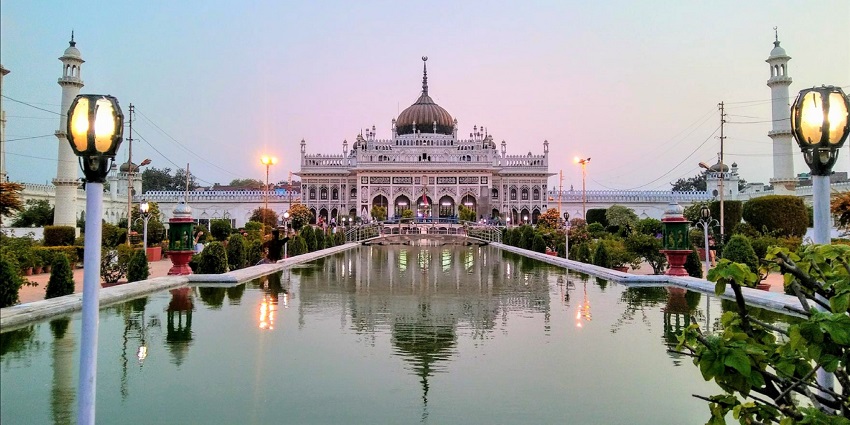
Photo: Syed Iqbal21 / Wikimedia Commons / Image For Representation Only
The Virtual Experiential Museum in Varanasi is located at the historic Man Mahal near Dashashwamedh Ghat, offering easy access from various parts of the city. It’s about a 10-minute walk from the main market in Godowlia, a popular hub for local shopping and eateries.
Suggested Read: Exploring Places To Visit Near Gorakhpur
How To Reach Virtual Experiential Museum
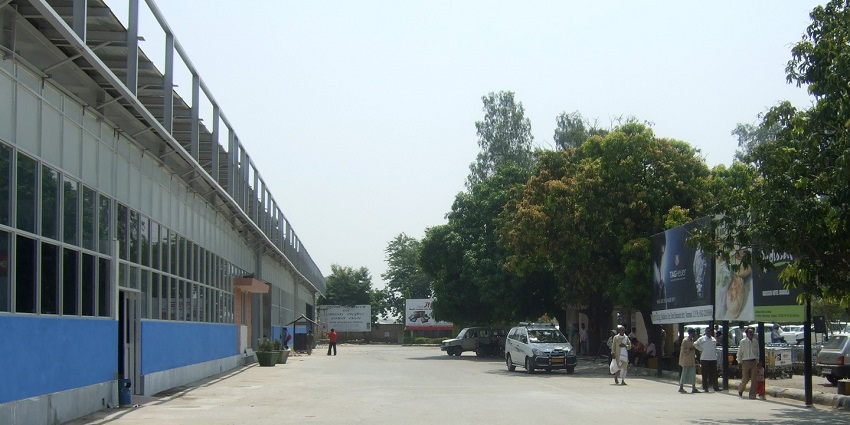
Photo: Kounosu / Wikimedia Commons / Image For Representation Only
Reaching the Virtual Experiential Museum in Varanasi, Uttar Pradesh, is convenient through various modes of transport, making it accessible for tourists from across the country.
By Train: Varanasi Junction is the nearest major railway station, located about 5 kilometres from the museum. Taxis and autorickshaws are readily available outside the station and offer a quick 20-minute ride to Man Mahal, where the museum is situated.
By Air: If coming in by plane, the Lal Bahadur Shastri Airport in Babatpur is approximately 25 kilometres from the museum. From the airport, you can hire a pre-paid taxi or cab service, which will get you to the museum in around 45 minutes.
By Road: Those choosing to visit by road can reach the museum through well-connected highways linking nearby cities like Allahabad, Lucknow, and Gorakhpur. Buses and private cars are common, and taxis from within Varanasi make it easy to reach the museum at Man Mahal, near Dashashwamedh Ghat.
Places To Visit Near Virtual Experiential Museum
Discover the enthralling sites and hidden gems merely a few kilometres away from the virtual experiential museum.
1. Kashi Vishwanath Temple
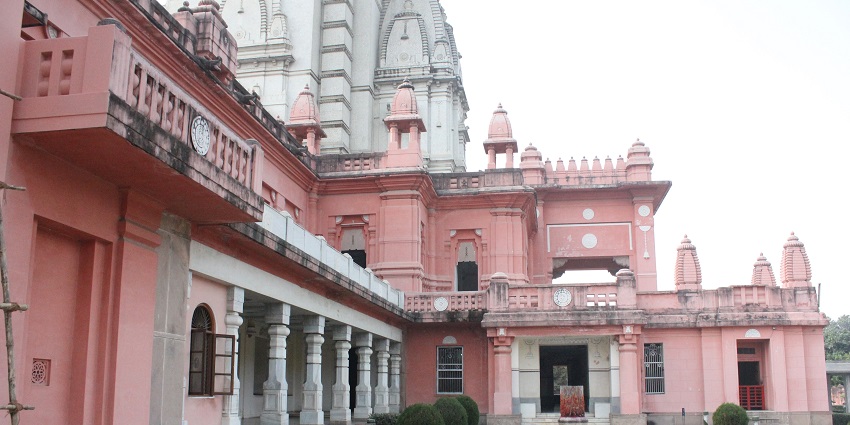
Photo: AKS.9955 / Wikimedia Commons
The Kashi Vishwanath Temple, which is dedicated to Lord Shiva, is one of the most significant Hindu temples in India. Its primary attraction is the Jyotirlinga, one of the twelve revered Shiva lingas across the nation, symbolising the city’s connection to the divine. Over the centuries, the temple has undergone various reconstructions. However, the current structure was completed in 1780 under Ahilya Bai Holkar. This temple features a gold-plated spire and dome, which add to its grandeur and attract millions of devotees. The Kashi Vishwanath Corridor, a recent enhancement, improves the visitor experience by linking it to the Ganga River.
Timings: 3 AM – 11 PM
Entry Fee: Free
Suggested Read: Top Places To Visit In Moradabad For Your Next Trip
2. Ganga Aarti At Dashashwamedh Ghat
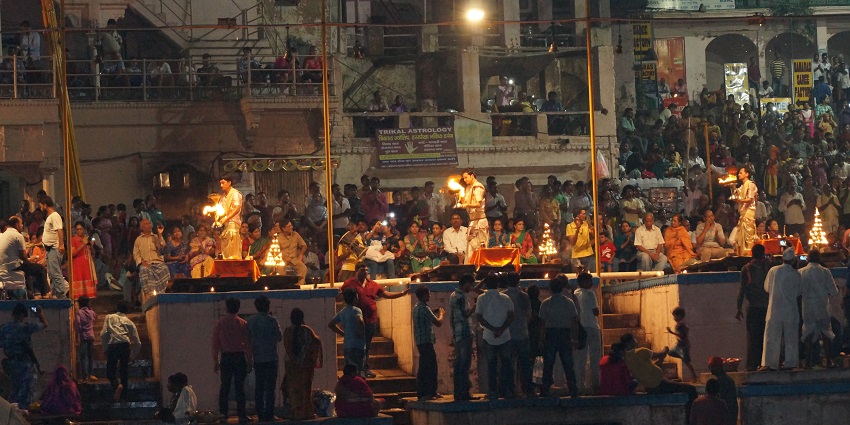
Photo: Ashishyadav.photographs / Wikimedia Commons
The Ganga Aarti at Dashashwamedh Ghat is a nightly ritual dedicated to the sacred Ganges River. Conducted by a collective of young priests adorned in saffron robes, this event features synchronised rituals that involve oil lamps, incense, and the chanting of Vedic hymns. The Aarti, which symbolises reverence for the river, is considered holy and life-sustaining in Indian culture. Accompanying the Aarti is a harmonious mix of conch shells, bells, and devotional songs, which enhances the spiritual ambience.
Timings: 7 PM – 7:45 PM (summer)
Entry Fee: Free
3. Ramnagar Fort
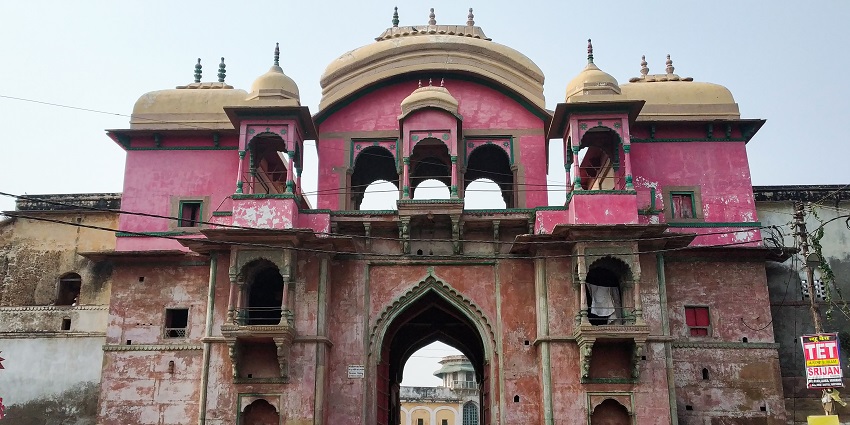
Photo: Paramanu Sarkar / Wikimedia Commons
Ramnagar Fort, situated on the eastern bank of the Ganges is an 18th-century sandstone structure constructed by Kashi Naresh Raja Balwant Singh. Unlike many conventional forts, Ramnagar functions as both a residential and administrative hub for the royal family of Varanasi. The fort features Mughal-style architecture, featuring carved balconies, expansive open courtyards, and beautiful views of the river. Inside, there exists a museum that showcases the royal family’s rich heritage, with exhibits of vintage cars, mediaeval costumes, weaponry, manuscripts, and a distinctive astronomical clock.
Timings: 10 AM – 5 PM
Entry Fee: ₹25 for Indian citizens and₹150 for Foreign Nationals
Suggested Read: Things To Do In Greater Noida For An Unforgettable Experience
4. Banaras Ghats
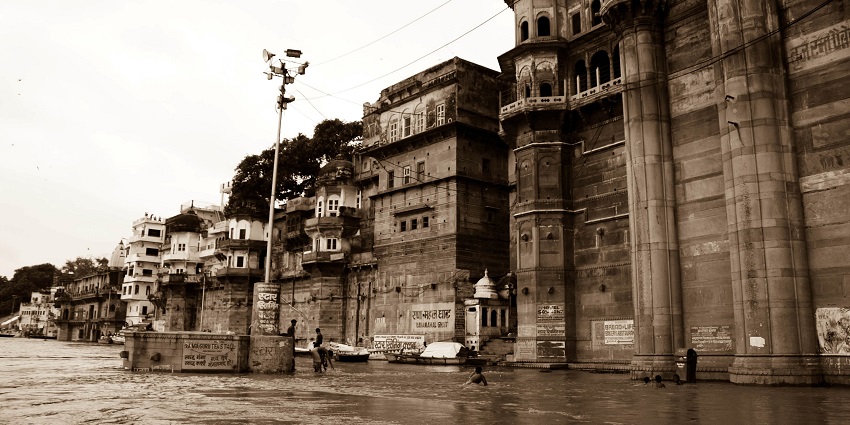
Photo: Pushpendra Gautam / Wikimedia Commons
With their iconic steps that descend towards the Ganges, the Banaras Ghats serve as a pivotal element of Varanasi’s spiritual and cultural landscape. There exist over 80 ghats, each possessing a unique significance. For instance, Dashashwamedh Ghat is renowned for its evening Ganga Aarti, whereas the Assi Ghat attracts visitors who prefer a more peaceful atmosphere. Manikarnika Ghat, recognised as a cremation site, holds a central role in Hindu perspectives on death and rebirth. The ghats are frequently used for various religious rituals, bathing, and meditation practices.
Timings: 24*7
Entry Fee: free
5. Dhamek Stupa
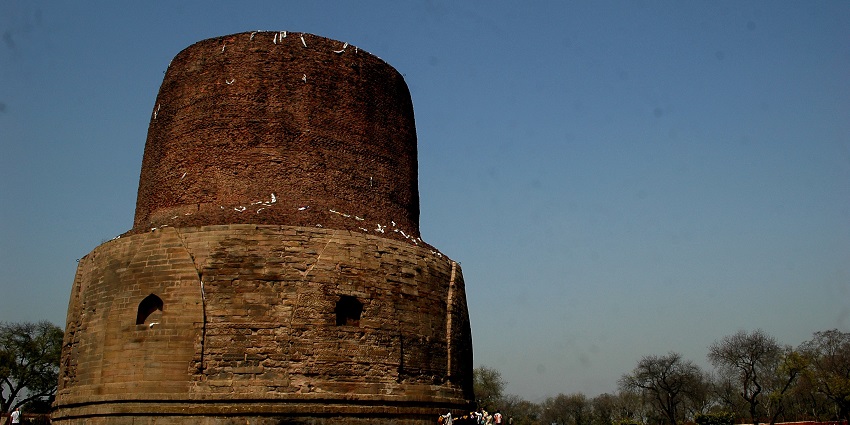
Photo: Prithwiraj Dhang / Wikimedia Commons
The Dhamek Stupa, located in Sarnath, is a vital Buddhist site. It signifies the very spot where Buddha delivered his first sermon post-enlightenment. Initially constructed by Emperor Ashoka in 249 BCE, this structure rises to a height of 43.6 meters, approximately 143 feet, representing a crucial landmark in Buddhist history. The stupa’s lower section is adorned with detailed carvings depicting flowers, animals, and human figures, embodying ancient Buddhist symbolism. Surrounded by greenery, the site provides a peaceful environment that is ideal for meditation.
Timings: Sunrise to Sunset
Entry Fee: ₹25 for Indian citizens and ₹300 for foreign nationals
Suggested Read: Places To Visit Near Ghaziabad For A Weekend Retreat
Where To Eat
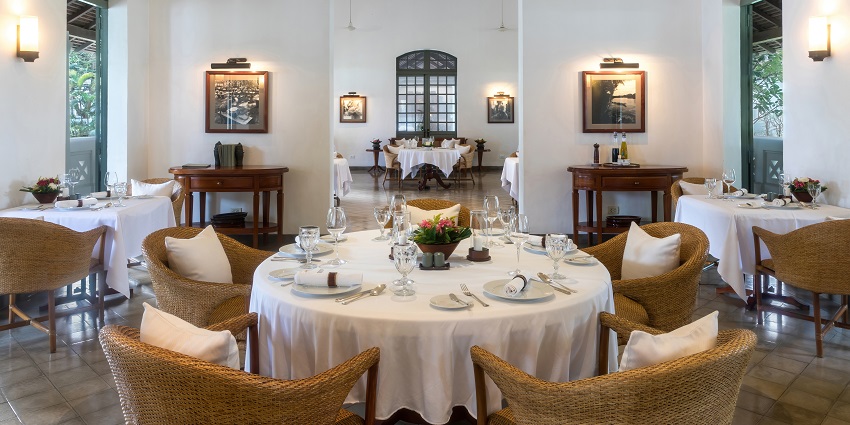
Photo: Basile Morin / Wikimedia Commons / Image For Representation Only
Varanasi offers diverse dining choices, from street food to upscale fine dining. For those seeking authentic flavours, Kachori Sabzi and Jalebi at the lively Kashi Chaat Bhandar is a must-try. Deena Chat Bhandar is another favourite destination, famous for its chaats and Banarasi street food. If you prefer a more formal setting, Pizzeria Vaatika Café offers a distinctive blend of Italian and Indian cuisine, all while overlooking the Ganges at Assi Ghat. Although Blue Lassi Shop is renowned for its delectable lassi varieties, upscale venues like The Palate at the Ramada Plaza also deliver a mix of Indian and international dishes within a cosy atmosphere. This diversity in dining options makes Varanasi a culinary delight.
Where To Stay
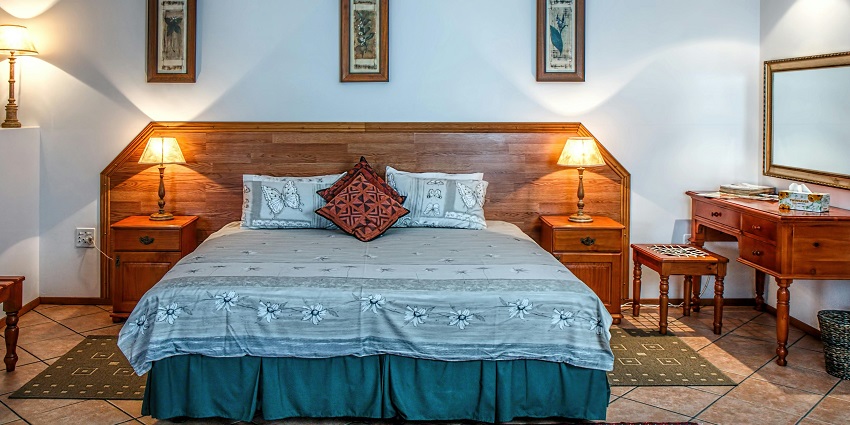
Photo: Pixabay / Pexels / Image For Representation Only
Varanasi offers various accommodations catering to diverse financial plans, from opulent heritage hotels to more budget-conscious guesthouses. For instance, the Brijrama Palace is an extravagant riverside heritage hotel with breathtaking views of the Ganga and traditional decor. For those seeking a mid-range experience, The Amayaa Hotel delivers modern amenities and easy access to the attractions within the city. Several hotels near the ghats, such as Suryauday Haveli, blend convenience with a pleasant riverside ambience. Budget-friendly accommodations are also readily available in areas like Godowlia, which is situated close to local attractions.
Suggested Read: Places To Visit In Fatehpur Sikri
Best Time To Visit
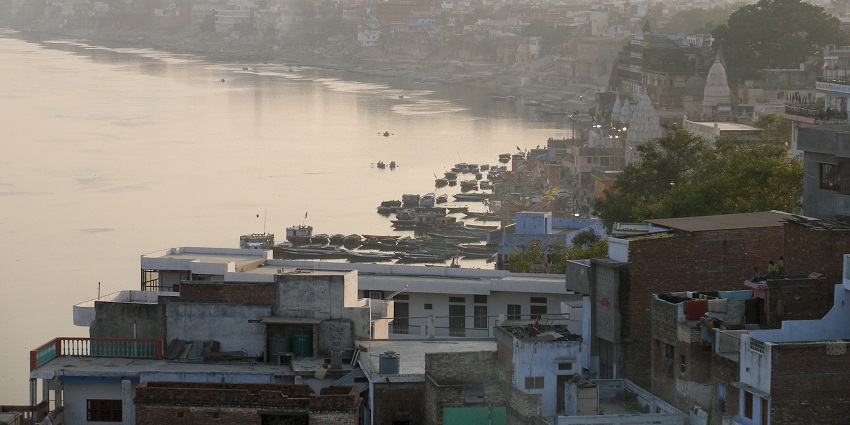
Photo: Vyacheslav Argenberg / Wikimedia Commons / Image For Representation Only
The best time to visit the Virtual Experiential Museum is from October to March, during which the climate remains cool and comfortable, with temperatures ranging between 12°C and 25°C. This season permits tourists to partake in outdoor activities, such as the evening Ganga Aarti and boat rides along the ghats, without enduring the extreme heat or humidity of summer. Although festivals like Diwali and Deepawali are celebrated with great grandeur, creating a unique festive atmosphere.
Other Factors To Consider
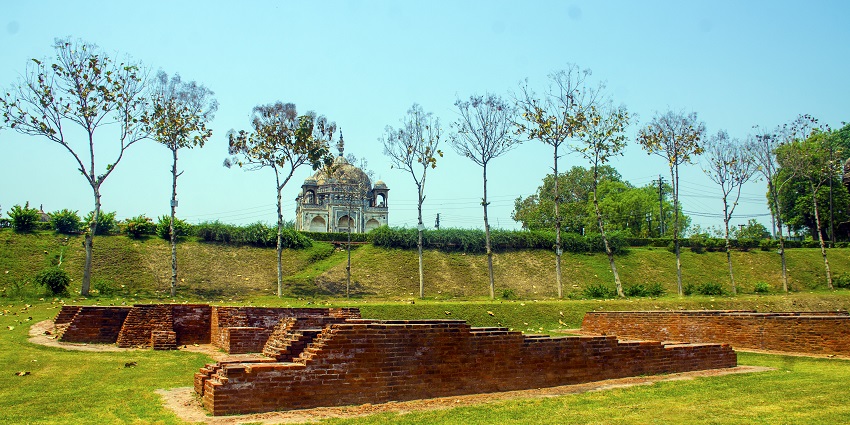
Photo: Rangan Datta Wiki / Wikimedia Commons / Image For Representation Only
When planning a journey to Varanasi, it is essential to consider several factors.
Average Cost Of The Trip
A trip cost to the Virtual Experiential Museum for 3 to 4 days may incur costs ranging from ₹10,000 to ₹25,000 per individual. This estimate includes accommodations, meals, and local transportation. However, expenses vary based on the selection of lodging and activities pursued.
Tips For Travellers
- Book tickets in advance to avoid peak crowds at the museum.
- Carry cash for entry fees and local transportation, as digital payment options may not be readily available.
- Visit early in the morning or late in the day for a peaceful experience.
- Staying hydrated is essential, especially considering the region’s warm climate.
- Flash photography is frequently restricted, so it is wise to check the rules before capturing photos at the virtual experiential museum.
Suggested Read: Things To Do In DLF Mall Of India
Explore the timeless legacy of Varanasi through a trip to the Virtual Experiential Museum and more. Varanasi provides an unforgettable experience through India’s rich culture. With TripXL, planning your visit is simple and convenient, whether you are exploring the ghats, local gastronomy, or the immersive museum experience. Make the most of your Varanasi adventure with expert suggestions and seamless reservations.
Cover Photo: Bernard Gagnon / Wikimedia Commons / Image For Representation Only


 WhatsApp
WhatsApp
 Twitter
Twitter









